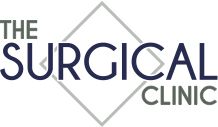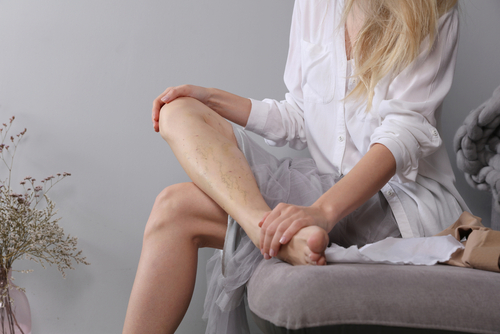Many people don’t associate veins with pain, but when you develop varicose veins, you live with daily discomfort. Varicose veins are a common issue, affecting around 30% of adults worldwide. While some people experience only mild symptoms, others struggle with persistent aching, heaviness, and changes in skin appearance that impact their quality of life.
Left untreated, varicose veins may progress to chronic venous insufficiency, venous ulcers, or deep vein thrombosis (DVT), making them more than just a cosmetic issue. Through both at-home strategies and medical treatment options, you can take proactive steps to relieve pain, improve circulation, and protect your long-term vascular health.
What Causes Vein Pain?
Varicose veins develop when the tiny valves inside your veins weaken or stop working properly. These valves normally keep blood moving upward toward your heart. When they fail, blood can pool in the veins of your legs, creating pressure that causes them to enlarge, twist, and bulge. This increased pressure is what often leads to aching, throbbing, or burning pain.
Several factors can raise your risk of developing varicose vein pain, including:
- Genetics: A family history of varicose veins makes you more likely to develop them.
- Age: As veins and valves naturally weaken over time, older adults are more prone to varicose veins.
- Pregnancy: Increased blood volume and hormonal changes can place extra strain on leg veins.
- Obesity: Carrying extra weight puts additional pressure on veins.
- Prolonged standing or sitting: Occupations or lifestyles that require long periods of immobility reduce circulation in the legs.
While varicose veins are sometimes painless, for many people they cause throbbing, heaviness, muscle cramping, swelling, or restlessness in the legs.
Related: Peripheral Arterial Disease: Don’t Ignore It
Solutions for Vein Pain
There are many ways to ease the discomfort caused by varicose veins. You can, with the help of your doctor, choose which treatment is best for you, depending on how your vein condition affects your life and what the underlying cause for your varicose veins.
At-Home Remedies
Sometimes, varicose veins can be treated with lifestyle changes. Many of the factors that contribute to the development of varicose veins can be controlled by the choices you make on a daily basis. For example, you can make lifestyle changes such as:
- Losing Weight: Your legs are the most common site for varicose veins, and excess weight places more pressure on the blood vessels in your legs. Weight also slows blood flow, especially when you are seated.
- Avoid Prolonged Sitting: Standing up and walking around if you spend a lot of time sitting down. If you have a desk job, set a timer to help you remember to get up and walk around to get the blood pumping.
- Get Active: If your veins are not too painful or not causing any complications, increased exercise can improve circulation and improve vein condition.
- Wearing Compression Stockings: Regularly wearing compression socks can help prevent blood from pooling in your veins by providing extra support. Talk to your doctor about which compression socks are right for you.
- Elevate Your Legs: Raising your legs above heart level for 15-20 minutes a few times a day can help blood flow back toward the heart.
- Over-the-Counter Pain Reliever: If you need temporary relief, medications like acetaminophen and ibuprofen can help, though you should consult your doctor before starting any medication.
Medical Treatments for Varicose Veins
Unfortunately, lifestyle management is often not enough to solve varicose vein problems. A number of procedures can help provide relief if you have trouble with veins. Some are surgical, while others consist of medications or injections. If you are still living in pain or if you start to develop complications, you’ll need to consider one of the following interventions.
Sclerotherapy
Most treatment methods for varicose veins involve closing off the vein in some way. In a procedure called sclerotherapy, your doctor injects the affected vein with a solution that causes the vein to close up and scar over. Generally, sclerotherapy is most suitable for smaller varicose veins and is helpful for reducing their cosmetic appearance.
Sclerotherapy is low risk with few side effects. You can expect some temporary bruising and soreness. Occasionally, a blood clot or headaches might occur from air bubbles because of the injection. Some patients might need more than one treatment for stubborn veins.
Laser Treatment
Another common treatment is to close the vein with a laser. Laser therapy for veins uses a targeted approach with a strong burst of light that causes the vein to close off and fade. Some patients like the idea of using laser treatment because there are no needles or incisions required for surface veins.
For larger veins that are located more deeply under the skin, your doctor can try an endovenous catheter laser treatment. The surgeon inserts the catheter into the vein and heats the catheter with laser energy. As the catheter is pulled slowly out of the vein, the heat from the laser closes the vein and seals it off.
Vein Stripping
This is a less common treatment for varicose veins, but vein stripping may be necessary if you have recurring problems with the same vein or in the same area. With vein stripping, a surgeon will remove a portion of the vein with a wire, tying it off before it connects to a larger, deeper vessel.
Your body redirects the blood flow through the larger vein instead, and the smaller vein can be removed through an incision near your groin. Your doctor may recommend this more invasive procedure if you have persistent signs of incompetent veins and if you are at greater risk for developing clots or venous ulcers as a result.
Endoscopic Vein Surgery
Rarely needed for simple varicose vein treatment, endoscopic vein surgery is the final treatment option when all other vein improvement procedures have not worked and when you have ulcers at the vein site. Your surgeon uses a tiny camera inside the vein to assist in removing portions of the vein through a set of small incisions.
This surgery takes longer to complete and does not have the same quick recovery time as sclerotherapy or laser treatments. However, most vein surgeries are effective for treating varicose veins, and you can eventually return to a life of full activity.
When to See a Doctor
While lifestyle changes and home remedies can help relieve mild vein pain, they may not be enough if your symptoms are more serious. It’s important to schedule an appointment with a vein specialist if you notice any of the following:
- Persistent or worsening pain that does not improve with rest, compression, or elevation.
- Swelling in one or both legs that becomes frequent or severe.
- Skin changes, such as discoloration, thickening, or rashes near your ankles.
- Bulging veins that are tender or warm to the touch.
- Bleeding from a vein after minor injury.
- Open sores or ulcers near the ankle that are slow to heal.
- Sudden leg pain or swelling, which may be a sign of a dangerous blood clot (deep vein thrombosis).
Untreated vein disease can lead to complications like blood clots, skin ulcers, or chronic swelling. Our vascular surgeons can evaluate your condition and recommend the most effective treatment plan for you.
Vascular Treatment at the Surgical Clinic
At The Surgical Clinic, our vascular specialists are experienced in diagnosing and treating varicose veins with personalized care plans tailored to each patient. Whether you’re concerned about symptoms like swelling, heaviness, or visible vein changes, or you’re ready to explore treatment options, we’re here to help you find lasting relief.
Don’t wait for your vein pain to worsen. Schedule a consultation with The Surgical Clinic today and take the first step toward healthier, pain-free legs.

